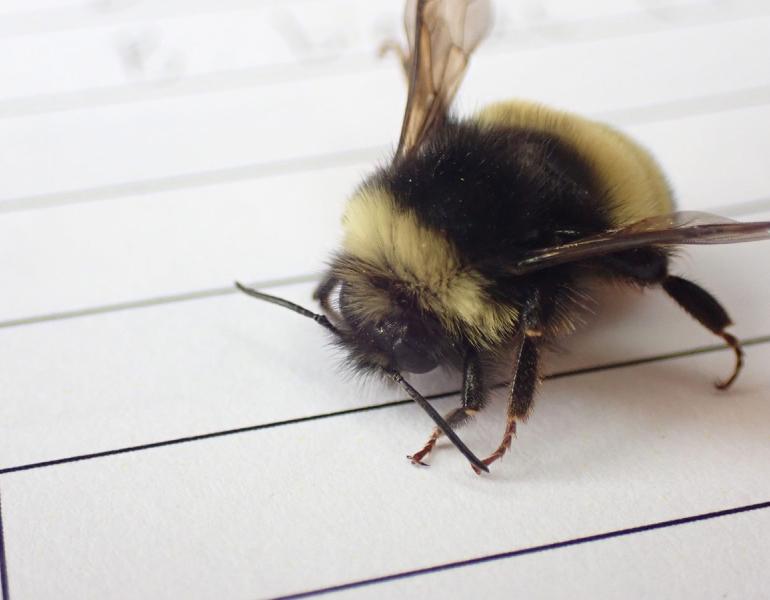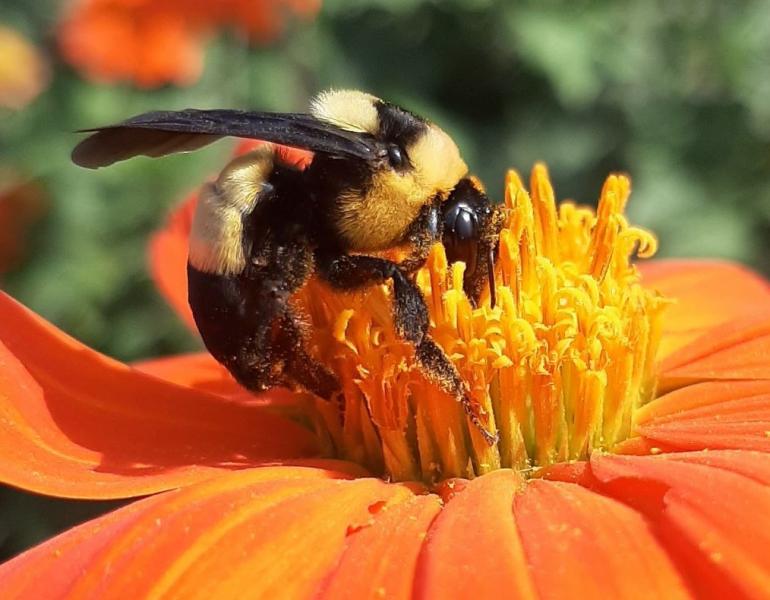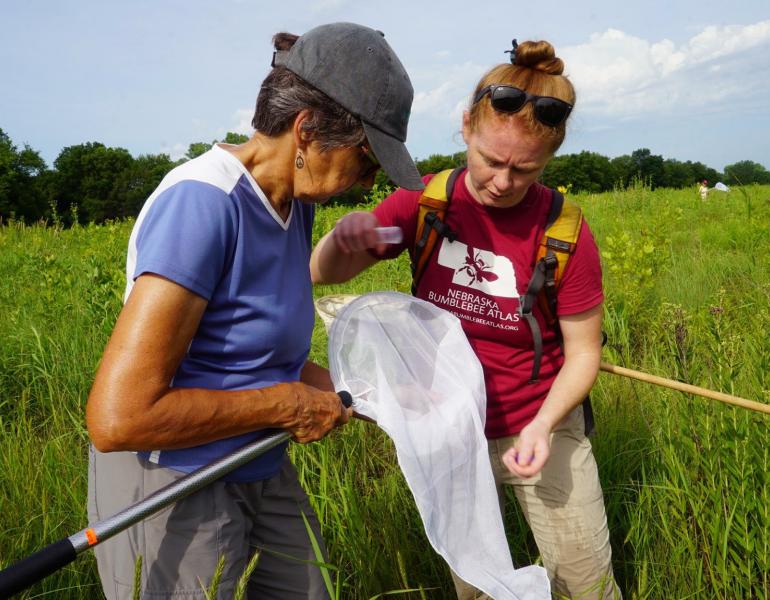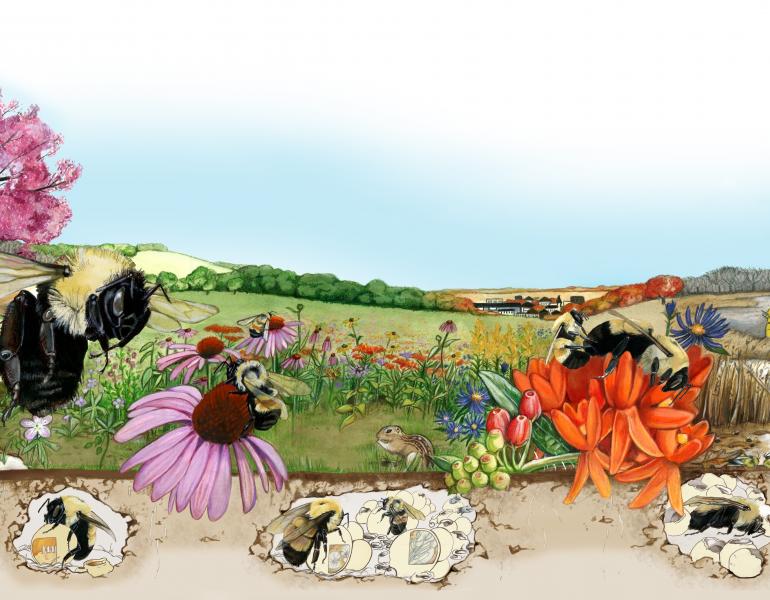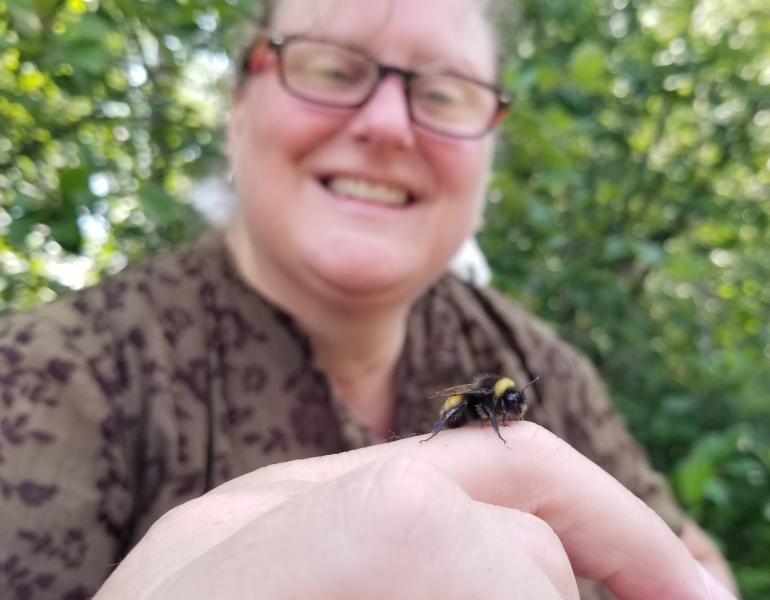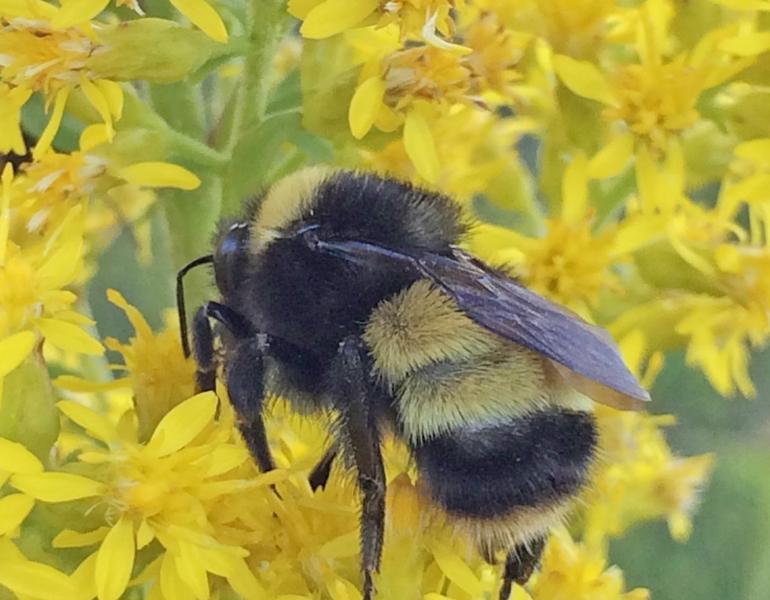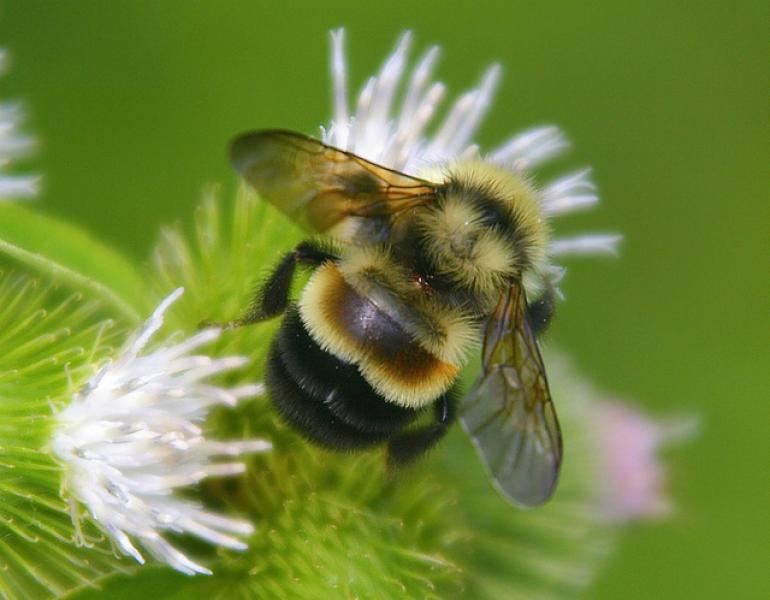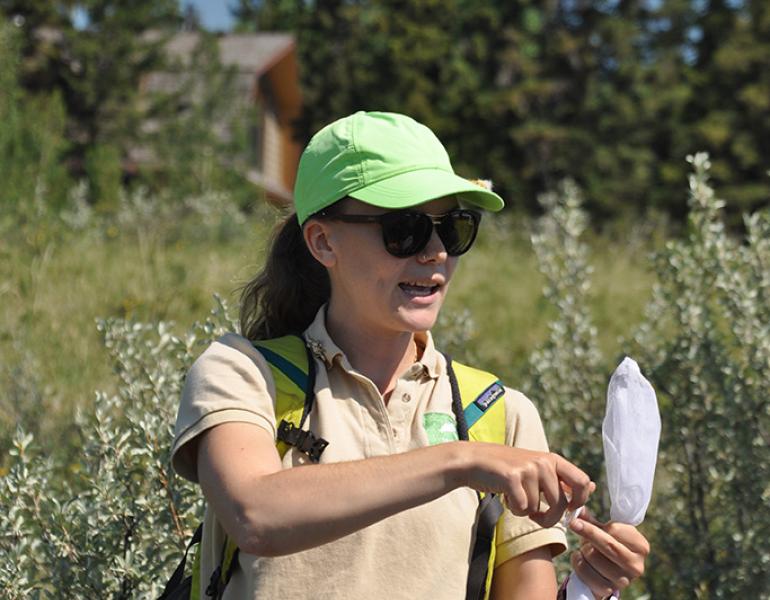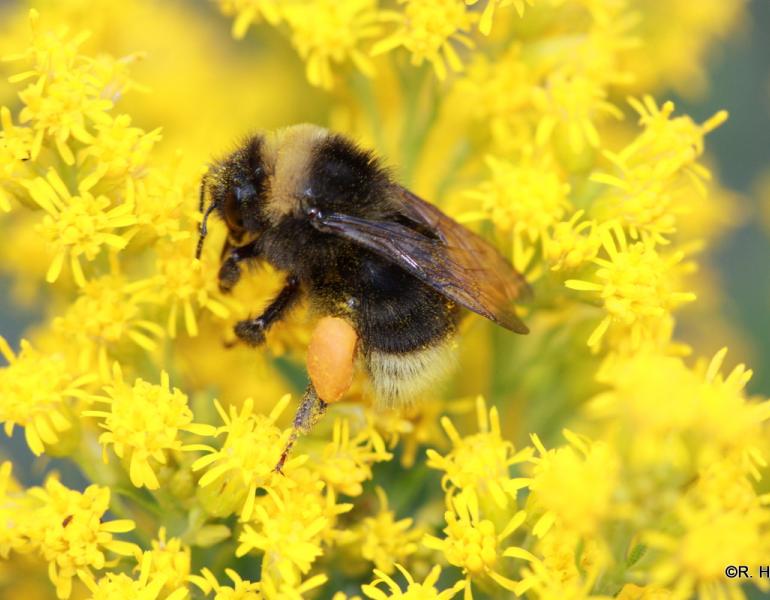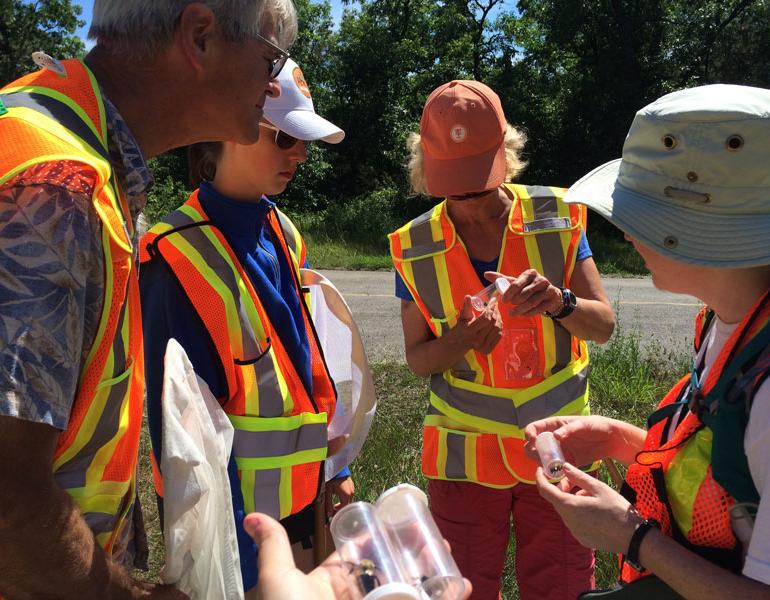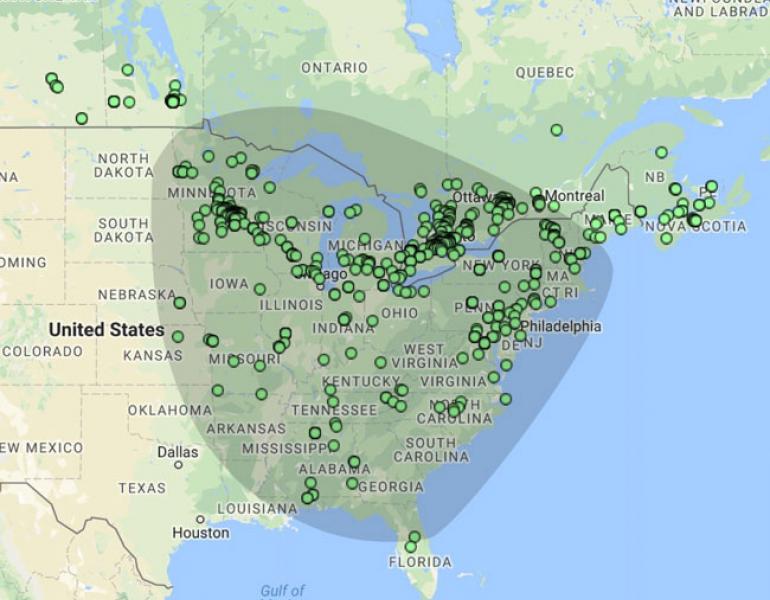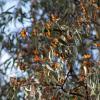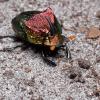Bumble Bee Atlas and Bumble Bee Watch are vital for filling data gaps and informing future conservation efforts. Today, we are highlighting some of the exciting finds of this summer’s collective efforts!
Bumble Bee Watch
Midwest Volunteers Map 18,000 Bumble Bees
Traversing the vast grasslands from North Dakota to Kansas, through the glades of Missouri and wetlands of Minnesota, hundreds of community scientists roamed the Midwest last summer in search of bumble bees. And they found them!
Using Community Science to Conserve Bumble Bees: From Small Beginnings to a Continent-Wide Effort
As we mark Xerces' 50th year, we look at the ongoing effort to protect bumble bees. Xerces has adopted a multi-pronged approach: outreach and education to raise awareness, technical assistance with habitat restoration, advocacy to gain legal protection, and, the focus of this article, community science to gather data that informs our work.
What Should You Do for Pollinator Week? Go Bumble Bee Watching!
Going bumble bee watching is not only fun, but also a great way to contribute to real conservation science. Why not try it this summer?
Turning Appreciation into Action Through Community Science
During the month of April, there is a focus on community science projects that can be done right from home. So, the next time you find yourself in an impromptu photoshoot appreciating that magnificent monarch, fuzzy bumble bee, or fabulous milkweed, consider taking it a step further by adding your find to a community science project.
The Power of The Pinery: Six Years of Bumble Bee Community Science at Ontario’s Pinery Provincial Park
Pinery Provincial Park, near the southern tip of Lake Huron in Ontario, has been the site of Wildlife Preservation Canada’s Native Pollinator Initiative since 2015. Volunteers participating in this community science survey program have created a robust long-term dataset by contributing nearly two thousand species-specific bumble bee observations to Bumble Bee Watch.
It Takes (More Than) a Village
Xerces Society work to involve community scientists in tracking bumble bees have resulted in many thousands of people submitting nearly 75,000 observations. Together, this sheds light on bumble bee populations, where they are thriving, and on which plants they are foraging -- and informs conservation and protection efforts.
Nebraska Bumble Bee Atlas: Doing a Little to Impact the Whole
The 2020 survey season begins this June. We hope you’ll join us in our quest to learn more about bumble bees and restore Nebraska’s natural habitats.
Five Ways to Support Queen Bumble Bees this Spring
This is a critical time of year because the queen needs sufficient food herself, as well as enough to nourish her first batch of developing offspring. Adding early blooming shrubs and trees to your yard or garden can provide essential resources that will help springboard the colony to health.
Ann Puddicombe, a Bumble Bee Watch Star
Ann is among the top ten Bumble Bee Watch submitters in North America. She has also given presentations on bumble bees to community groups, conducted her own independent bumble bee surveys, and advised local groups in creating pollinator habitat.
Still Questing for Bee Nests
Did you beat the odds this year and spot a bumble bee nest? If so, we really want to hear from you for York University’s #Quest4BeeNests research project!
Working Together in Iowa to Find the Rusty Patched Bumble Bee
Sarah Nizzi, Farm Bill Pollinator Conservation Planner and NRCS Partner Biologist, writes about a recent workshop in Iowa and a sighting of the endangered rusty patched bumble bee.
5 Ways Wildlife Preservation Canada’s Bumble Bee Recovery & Conservation Initiatives Benefit from Bumble Bee Watch
Wildlife Preservation Canada’s efforts to conserve native bumble bees would be nothing without help from our volunteer community scientists across the country, and without Bumble Bee Watch.
Pollinator Conservation Program Digest – November 2018
November’s featured staff hail from Minnesota, Indiana, and California, and have been conducting training and outreach events, helping General Mills to implement their plan to plant 3,300 acres of pollinator habitat, and monitoring farm habitat plantings in the San Joaquin Valley.
Fall Garden Tips to Benefit Bumble Bees All Year
The growing season may be winding down, but fall is an important time to create habitat. The work you do now will help support overwintering pollinators and the next generation of bumble bees.
Kicking Off Canadian Bumble Bee Watch Training Events!
During this year's Pollinator Week (June 18 to 24) multiple locations in Ontario and Alberta were buzzing with activity, including an assortment of Bumble Bee Watch community-science training events led by Wildlife Preservation Canada.
Surprising Results from a Survey of Bumble Bee Watch Users
This past February, Bumble Bee Watch users were invited to take a survey run by York University researchers to learn more about participant demographics, motives, and confidence with bumble bee identification.
Wildlife Preservation Canada Continues Training “Bumble Bee Watchers”
Begun in 2015 at one location in Ontario, Wildlife Preservation Canada has expanded Bumble Bee Watch citizen science training programs to multiple locations across Canada. The programs are held in areas with historical observations of at-risk species.
Observations by Community Scientists Expand Known Range of the Two-Spotted Bumble Bee
Contributions to the community science program Bumble Bee Watch are expanding our understanding of where species have been - and potentially where they are going.

